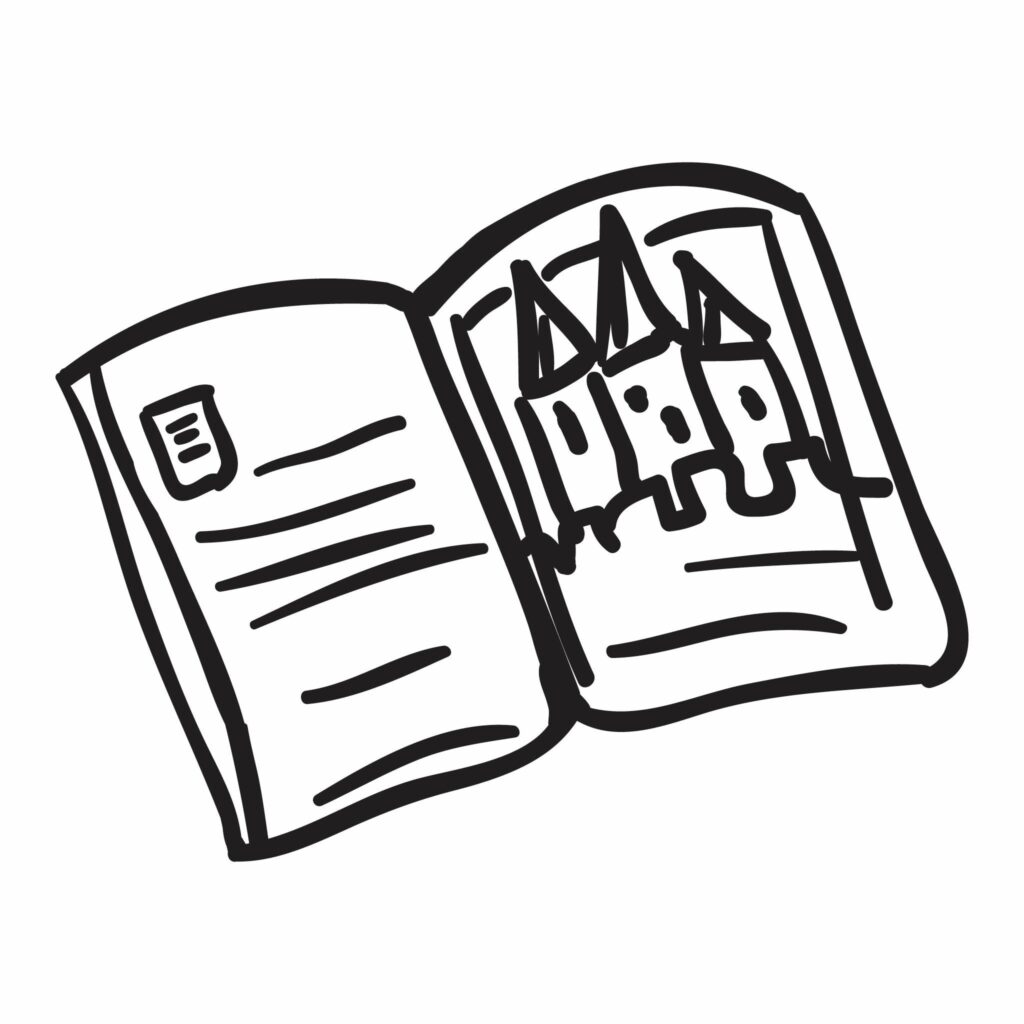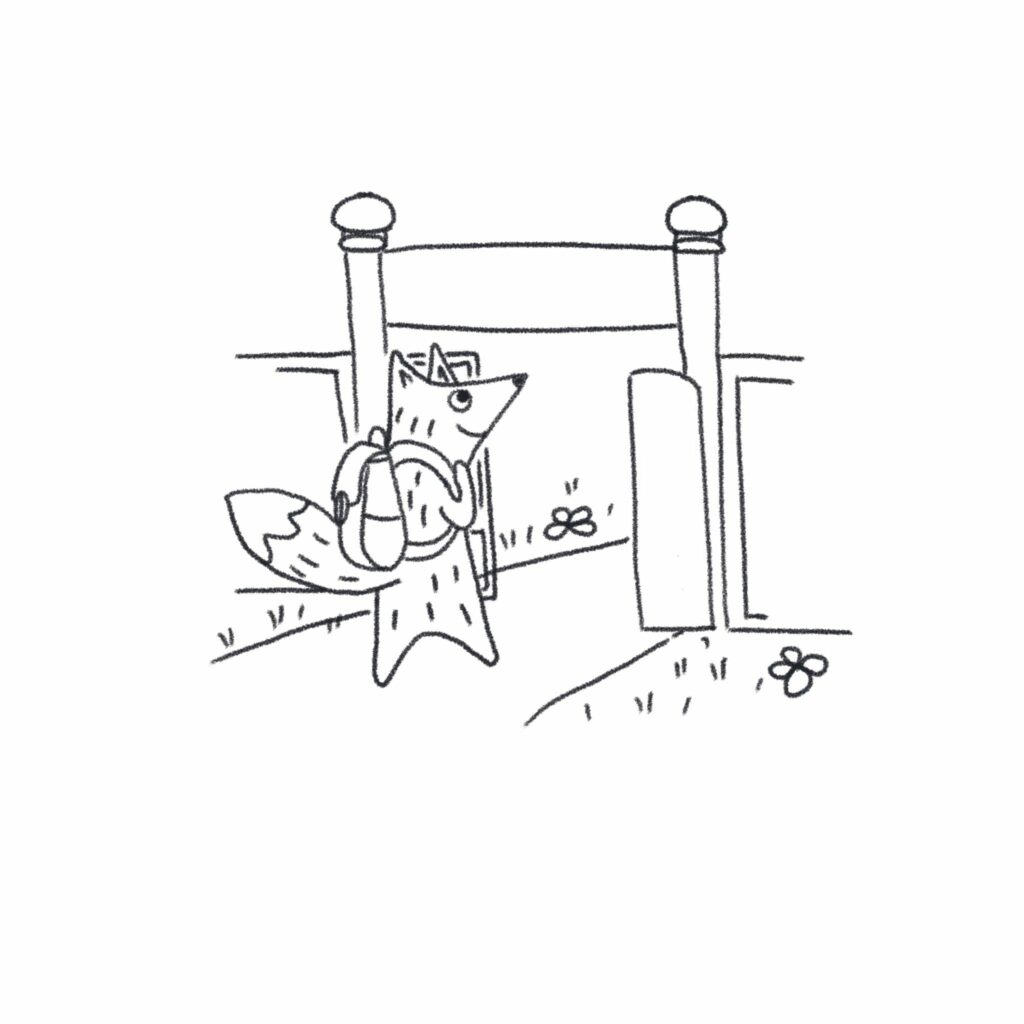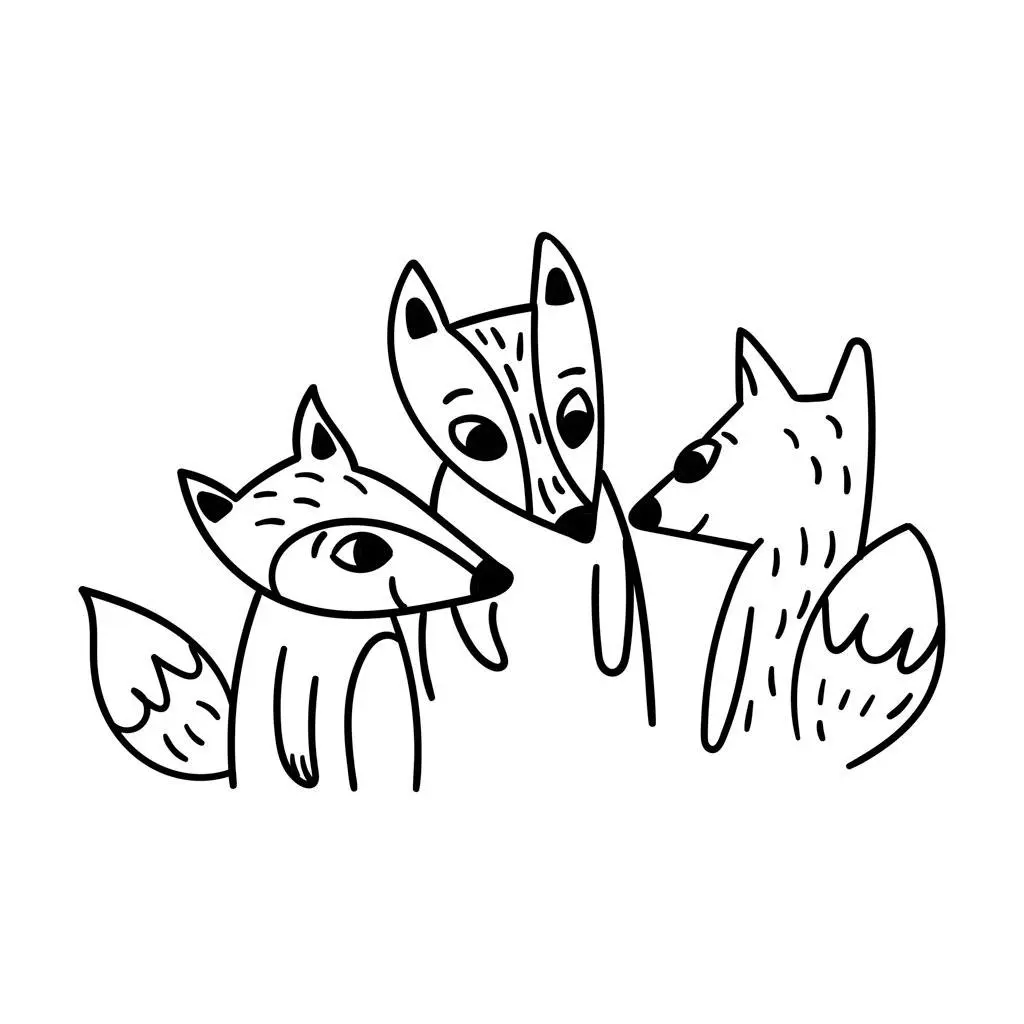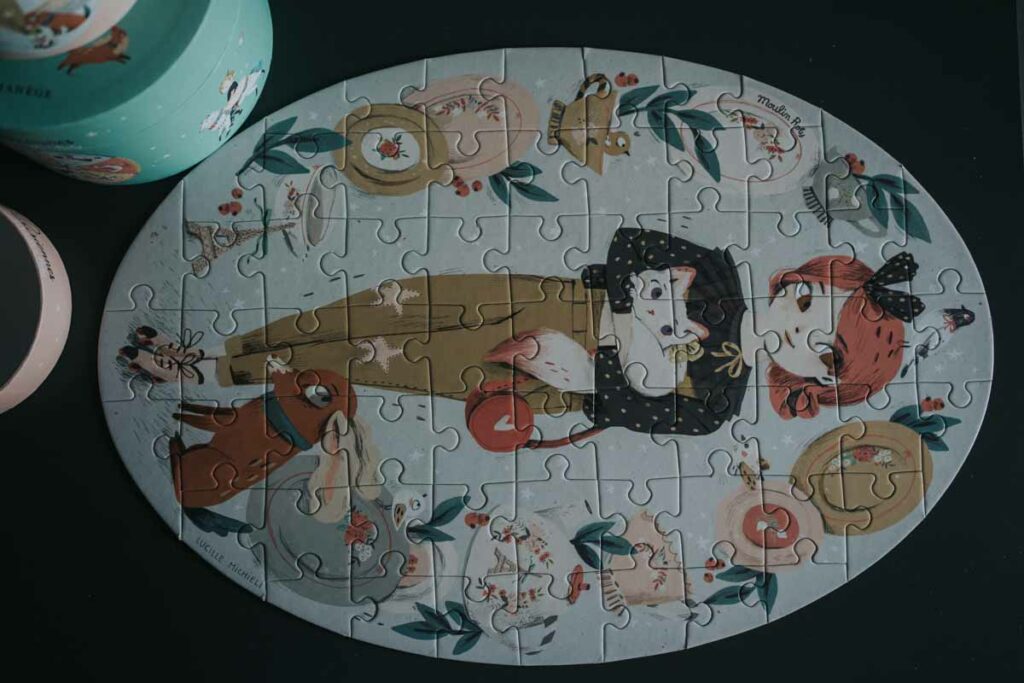Have you ever wondered what the benefit of listening to stories is for children, beyond the joy of simple entertainment?
Reading stories to young children helps them make sense of the world. Without experiences of their own to draw on, stories act as signposts for the young mind, directing them along the right path and steering them away from danger. It also gives children a sense of what’s possible in life. If you’re a boy who wants to be a ballet dancer or a girl from an immigrant family who dreams of becoming an astronaut, there’s probably a book about that somewhere. Stories inspire them and build their confidence.
Listening to stories with a beginning, middle and end also helps children place events, facts and thoughts into a sequence. Through listening to stories, children learn the syntax of storytelling, and that things often come in threes (the fox, owl and snake in the Gruffalo, for example). Understanding this arc is a vital skill in many areas of life, in and out of school, be it solving a maths equation or deciding what to wear. There is a story in almost everything we do.
Storytelling comes naturally for most children, but they can often need help getting events into the right order and connecting things in a logical way. Listening to stories is a great way to develop and support this skill. Read John Burningham’s Would You Rather…?, to your three-year-old and you’re not only delivering the vocabulary for some of their favourite things, you’re also teaching them how to ask this important question without having to figure out the sentence structure. (This will come in very handy when they’re hosting their next tea party and offering their teddies cakes, biscuits or chocolate.).
And, if you can immerse your child in stories from an early age, you are building up a bank of words, phrases, characters and situations for them to access later on when they come to try their own creative writing; a kind of compost for their growing imaginations. As the writer Tom Hodginkson says in his book, How to Be Free: ‘ Put quality materials into your mind, quality ingredients. A diet of good writing will produce quality thoughts and a self-sufficient, resourceful person. Feed your mind.’
As with all our advice at 100 Toys, we’re not here to tell you what to read but to empower you to make your own choices. And that means showing you what to look for rather than giving a list of specific titles (although there are a few we think are worth mentioning specifically, many of which you are probably already familiar with.)
You can carry below on reading or jump to whichever section you find most interesting via these links:
- Fairytales and nursery rhymes
- Classic story books
- Oral storytelling
- Traditional tales
- Book recommendations by age
Fairytales and nursery rhymes
It’s tempting to question the relevance today of many of the old nursery rhymes and fairytales. Princesses in castles and pigs who build houses out of straw can all sound a bit outdated. There’s also a gruesome side to many of the old stories – Hansel and Gretel abandoned in the woods, Sleeping Beauty cursed in her cot by an evil fairy – that can feel like a little too much for our innocent babies to hear.
But these classics are important and endure for good reasons. Listening to stories like the Gingerbread Man or Cinderella can often be the first time children learn about morally ambiguous characters (aka baddies.) The behaviour of these baddies – reckless, impulsive, selfish, duplicitous – often reflects impulses that young children experience, but must also learn to suppress or resist. Think of Goldilocks, the little girl who breaks into someone’s house and steals the food, or Jack, who steals gold coins from a giant and then chops down his beanstalk and kills him. Under-fives are especially interested in the boundary between good and bad – one of the reasons their behaviour can be so challenging. Through stories, they are free to explore actions and feelings that they know are unacceptable or too dangerous in everyday life.
Listening to these age-old stories helps children understand how morality works, how other people think and behave; they imagine themselves to be characters in the book and see others in the characters they hear about – thus developing their sense of empathy and understanding of society’s rules, and when they can be broken. All of which in turn enriches the quality of their relationships and their play.
Traditional tales are also a great source of cultural capital for those children who know them, in the same way that adults benefit from a bit of Shakespeare and the classics. Everyday speech and writing is peppered with references to them (Once upon a time…). This bank of cultural and linguistic knowledge is a gift they’ll come back to again and again as they grow up.
Classic story books
If you’ve got more than one child at home, story time can become quite tricky as you try to appease different ages and find stories that engage everyone. We can’t tell you what to read but can recommend one vital rule: keep it simple.
Books that focus on innocuous, everyday scenarios, that might almost seem dull or mundane to us, are often what draw children in. Eating supper (The Tiger who Came to Tea by Judith Kerr), going to school (Lucy & Tom by Shirley Hughes), playing at a friend’s house or going to the doctors (Spot by Eric Hill.) They delight in the everyday events, the recognition that a story’s hero might enjoy all the same things they do, as well as having the same worries and fears. Knees are grazed, the grandparents visit, beloved toys are lost.
These simple tales can then inform their play as they remember how the story unfolded and steer their own games of dress-up and make believe in the same direction. Stories, though they require a modicum of your time to read them, can inspire hours of self-reliant and independent, creative play.
So many of today’s picture books are driven by the illustrations alone or a fantastical concept – aliens and underpants and glitter and unicorns. They look beautiful and are superficially fun, but can often appeal more to design-conscious parents than young children, who need simple, relatable stories about everyday events. Again, we return to our theme: keep it simple. Simple storylines; recognisable characters. Fancy designs and complicated plots can wait.
Oral storytelling
Not all stories need to come from a book. If you have exhausted your nursery bookshelves or feel you’d like to try something different, then give oral storytelling a go.
Oral storytelling can be as basic as telling a story to your child, either one you have imagined or one that has special meaning to your family or friends. Perhaps a great-grandparent was evacuated in the war or a wayward aunt once rode a camel in Egypt. It’s amazing how other people’s travels and adventures can be brought to life, especially if you have pictures or props to add to the descriptions.
If telling your own stories seems daunting or unexciting, try a story bag:
- gather a collection of interesting objects for example: a feather, a coin, a crown, a key
- put them all into a bag
- players takes out three items and must tell a story based around the objects. For example: A king had his crown stolen by an eagle (feather). A little boy found the crown in a tree and the King rewarded him with a gold coins.
(There is no winner or loser in this game, just lots of fun and creative thinking as you all try to craft the funniest story.)
Take another look at traditional tales
Another way to bring a more flexible approach to your stories is to adapt originals with your own twists. This can be especially helpful when telling fairytales that seem too gruesome or need updating with more modern values. Try having Hansel and Gretel get lost in the woods, rather than being abandoned, and skip the part about them going in the oven. The important thing is to focus on the core message – why it’s important not to wander off from adults. Like us, children don’t like being told what to do, but they’re happy to internalise messages they learn from stories.
Recommendations by age
Knowing what’s good to read to them and when, is something most of us with young children know instinctively. But if you need some inspiration, or you’re buying for other people’s children, here’s our reading guide for the under-fives:
From birth: Start with lullabies and nursery rhymes. Sing to your child. Teach them the rhythm of the spoken word.
3-6 months: go for high-contrast, black and white first books, to teach visual discrimination. Although, don’t get hung up on making everything perfectly comprehensible. Reading a book is as much about close contact and enjoying a shared experience. A baby understands very little of Goodnight Moon but the rhythm of the words and her proximity to you both convey powerful messages.
6 months: As vision and concentration improve, look at books of concrete nouns (house, dog, ball) with just one item per page. If you pick up a book and it contains words like ‘happy’ and ‘thoughtful’ or even verbs like ‘running’ and ‘jumping’, put it back down again. It will be totally incomprehensible. The layout should be simple with single, familiar objects on white backgrounds. There must be as little confusion as possible. Some of our favourites include Dressing, by Helen Oxenbury and the Big Box of Little Books by the Ahlbergs.
12 months: Move on to simple books with a basic story like Spot, by Eric Hill, Dear Zoo and Oh Dear! By Rod Campbell. These books have simple white backgrounds and no extraneous detail, which helps children know where to look, and what the important parts of a story are. Simple themes from everyday life – playing at a friend’s house or looking for something – make them easy for children to relate to. Lift-the-flap books are also great at this age, appealing to your baby’s curiosity while also teaching them that words are labels and everything has a name.
2 years: Long before they can recognise letters and words, toddlers learn the conventions of reading: which way round to hold the book, how to turn the page, that a book is read from front to back. They also start to see that the page is made up of pictures and words and that words carry meaning. There’s no great trick to teaching this: read often, and talk about the process of reading and the book itself. Can you turn the page for me? Who is on the front cover? What can you see on the back? Move on to classics and fairy-tales, like the Three Little Pigs or Little Red Riding Hood. These stories have lots of repetition and rhyme, which help cement understanding. Children are also learning about narrative structure, that stories have a beginning, middle and end and that the protagonist undergoes some kind of transformation. Baby books have no plot to speak of, so this is a concept that has to be introduced.Sly Fox and the Little Red Hen has an unusual rhythm and is paced beautifully. It’s one of a series of Ladybird First Favourite traditional tales that I recommend wholeheartedly.
Toddlers are also learning to pay attention, to focus on the page and to look for detail. Part of the skill of reading is learning to spot the difference. Scouring the page for the missing boy in Where’s Wally is great practice for later learning how to distinguish between a ‘b’ and a ‘d’.
Nursery rhymes are still your friend at this age. Listening to songs gives children readymade chunks of language that they can use in their own speech and repetition makes songs – and the words they contain – memorable. Story time is fun when you throw in classics like Heads, Shoulders, Knees and Toes, and rainy days don’t seem so long when you break up the day with a bit of movement.
3-4 years: Preschool is the time to introduce more interesting stories.Once the building blocks and perennial themes in stories (and life) are in place, they can begin to break the rules and understand how they might tell their own stories. The Three Little Wolves And The Big, Bad Pig, by Helen Oxenbury subverts the original story with very funny results. The subjects may still be familiar but the plots can be more interesting and the language more challenging. But remember, children are still quite literal at this age. They do not infer from the text. They can’t read between the lines. Baddies are very bad and goodies are angelic. Older children will enjoy reading about characters of ambiguous morality like Rotten Ralph or the eponymous pig in Charlotte’s Piggy Bank but preschoolers prefer characters that are easier to read. Think Supertato or Little Red Riding Hood‘s Big, Bad Wolf.
Of course, this doesn’t mean that the books have to be easy. There’s a direct link between a child’s vocabulary and later academic success at school, so make sure you offer more challenging texts from time to time. Just make sure to keep it fun. Story time is a time for fantasy and escape.
5+ years: your children will probably be learning to read at school. Reading to them at home will support their learning and continue to develop their imaginations, ideas and language. Then one day, you’ll realise it’s been very quiet for a while, and you’ll go to check on your child, and you’ll discover them contentedly reading, all by themselves. This is a huge milestone in their development, and in my experience, one of the best as a parent, too.
Usborne Young Readers is a wide-ranging series for five-to-seven-year-olds who are learning to read independently. But it’s a set worth considering if you want a ready-made library of classic tales to read to a younger child. Other books in the whizzy five-year-olds category are those by Illustrator Chris Riddell. The Ottoline series is great fun and Once Upon a Wild Wood cleverly weaves a number of fairytales into something unique and new.
Other recommendations:
Anything by Janet and Allan Ahlberg. Start with Each, Peach, Pear, Plum, and progress to Burglar Bill and Cops and Robbers.
Allan Ahlberg has also worked with other illustrators. The Runaway Dinner, The Pencil and Hooray for Bread are well worth a look and likely to become bedtime favourites.
Books like The Very Hungry Caterpillar and Bears in the Night have very clear structures. They reinforce the idea that one thing follows another. The latter is also brilliant for learning prepositions: down the tree, over the wall, around the lake, between the rocks. And the ending is really exciting!
The Little Red Train series, by Benedict Blathwayt is very sweet, with lots of detailed pictures. You don’t have to be a train lover to enjoy these books.
The Cat in the Hat (or any other rhyming story, but this is the quintessential example). Rhyme draws children’s attention to the final sounds in words, which is one of the first steps in learning to read. Our free Guide to Reading goes into more detail.
Final word
In the end, choosing a book is personal. It’s one of the reasons I’m reluctant to share too many recommendations. And children have their own preferences too. If you’ve chosen the wrong book, they will lose interest. If it’s a good one, they’ll ask you to read it again and again.
As with toys, children are naturally drawn to books that match their level of development, so don’t worry too much about choosing the wrong one – they’ll let you know!
Are you ready for school?
Do you have a preschooler? Would you like them to develop some key skills before starting school? How wonderful to go into school on that first day feeling like you belong.
Get Set Five is a year-long course full of fun and free activities to do with your child.




